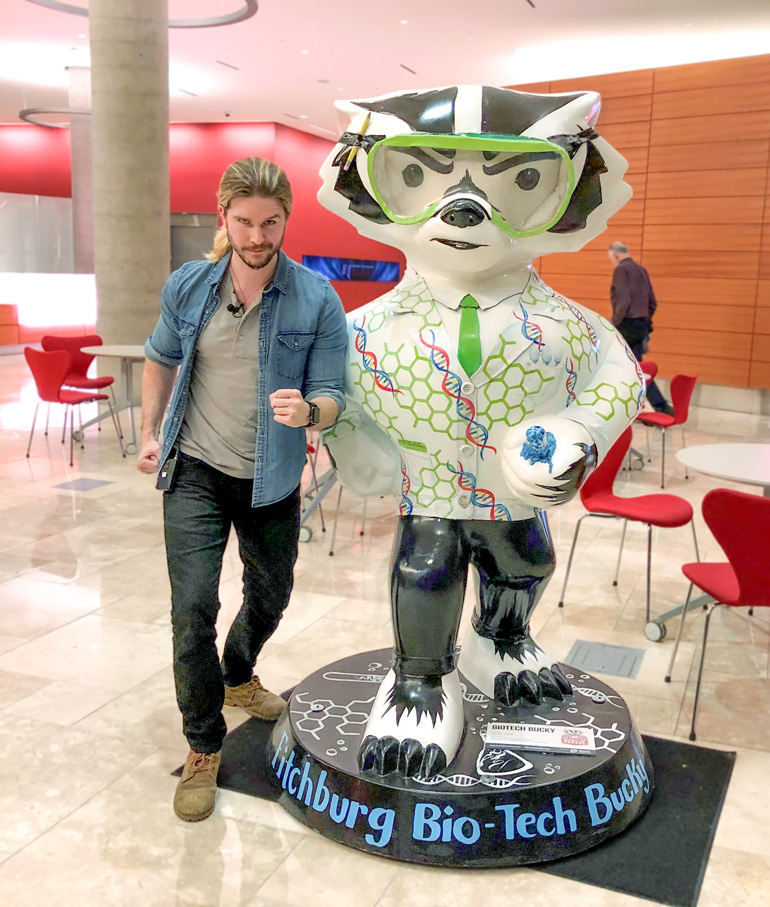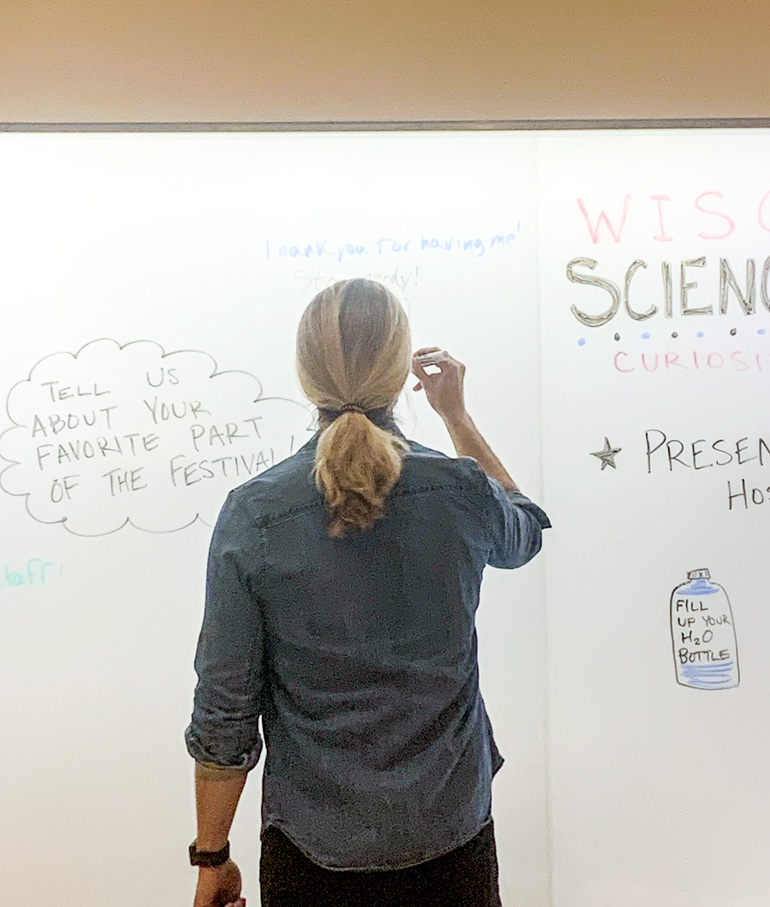
With another major Star Wars film about to hit the theaters this year, sci-fi enthusiasts are abuzz with excitement to watch epic lightsaber battles and hyperspace travel. But are these sci-fi concepts more grounded in science or fiction? That is what science communicator Kyle Hill aims to explore.
A Wisconsin native, Hill graduated from Marquette University with degrees in engineering and science communication. Now he resides in Los Angeles, where he built a career writing and talking about the intersection of science and pop culture through his video series, Because Science.
This past weekend at the Wisconsin Science Festival, hundreds of fans gathered to hear Hill share his ideas on how the sci-fi concepts in the Star Wars movies aren’t that far off from actual science.
Star Wars fans joke about stormtroopers being terrible marksmen, and they also die pretty easily in the films despite being covered head to toe in bulky white armor plating. So, what’s the point of even wearing it? Body armor made from Kevlar spreads out the impact energy from a speeding bullet. But Hill surmises that the weapons in Star Wars are laser blasters that shoot rapid blasts of laser energy with very little momentum and mass, so typical body armor wouldn’t do much. Instead, stormtrooper armor must be made of a material that uses ablative shielding to reduce the amount of damage taken from a laser blast. This is the same concept used in real spacecraft to protect them upon reentry into the atmosphere.
Hill also discussed the type of engine needed to power an X-wing spacecraft. Ion engines are a real thing, and a very efficient propulsion method. But it takes a long time to reach top speeds because there is very little thrust. Hill takes a moment to joke that “rocket Science is just throwing things fast in the opposite direction you want it to go…the rest is just math.”
He concluded that an X-wing Fighter would likely need an engine similar to a nuclear fusion engine—essentially detonating small pulses of hydrogen bombs to propel the spacecraft. This method is great for space travel in theory, but testing it on Earth is a different story. Project Orion was cancelled in the early 1960s, because the idea of essentially detonating small hydrogen bombs to launch a rocket into space probably wouldn’t be that wise.
Hill also discussed the how Emperor Palpatine could shoot Force lightening from his fingers, the physics of lightsabers, and fielded questions from the audience. As a fan himself, he acknowledges his own curiosity to dive into topics that he’s interested in. “Then I look for the ‘gold coins’,” he says, “the teachable thing.” His goal in talking about science through a pop culture lens it to make complex topics accessible to everyone. To learn more about the science behind your favorite films, comic books, and more, check out Hill’s series, Because Science—there’s something for everyone.

Latest posts by Mariel Mohns (see all)
- Sustainability Makeover: Parking Ramp Edition - January 27, 2020
- Go with Your Gut: Understanding How the Microbiome and Diet Influence Health - November 26, 2019
- Kyle Hill Explains the Science of Star Wars at the Wisconsin Science Festival - October 23, 2019
